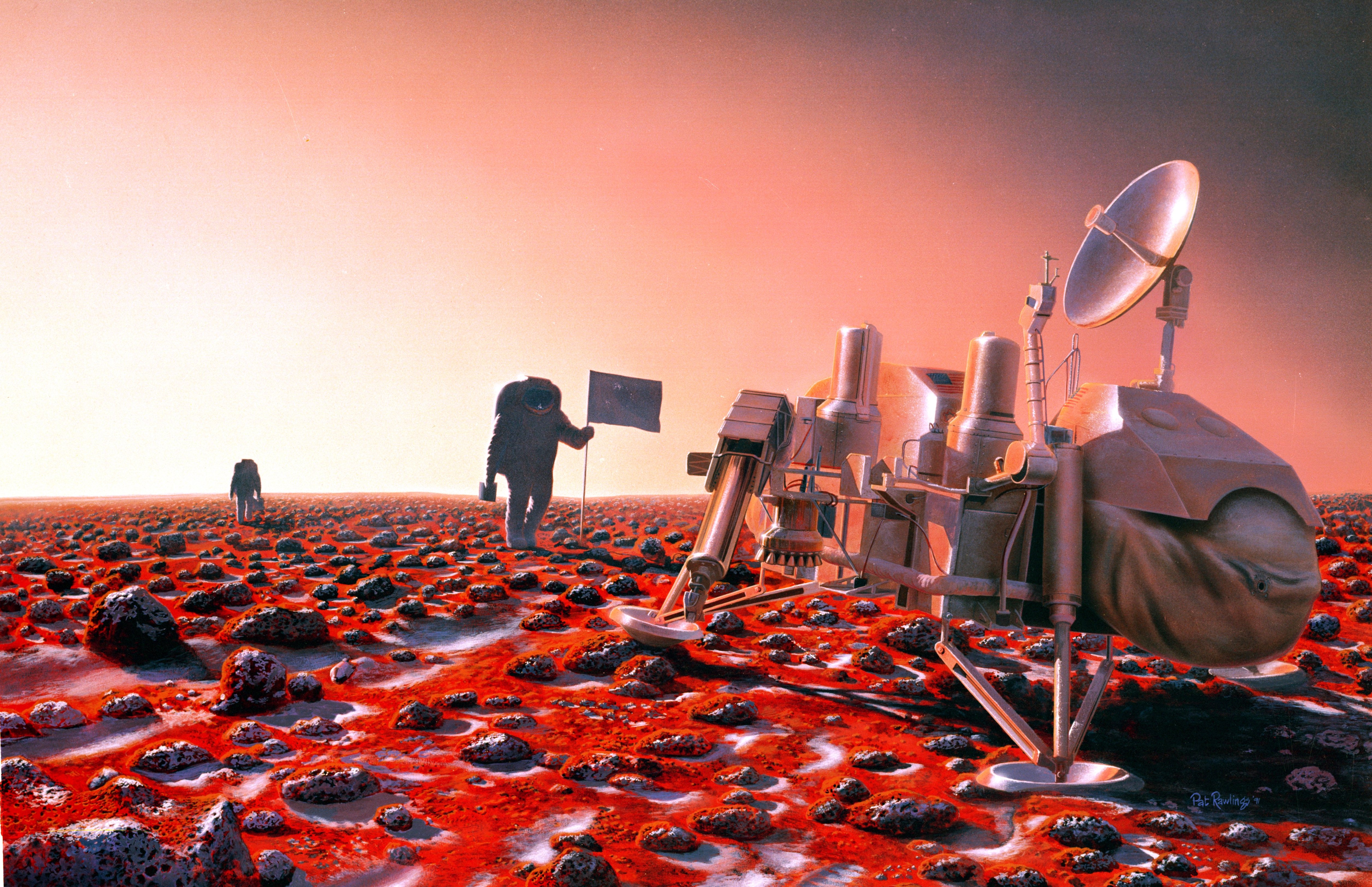Winter Quarter 2016
Professor: Donna M. Jurdy
Teaching Assistant: Amir Salaree
Department of Earth & Planetary Sciences

The first humans on Mars may revisit the landing
site of the Viking 2 Lander to study the effects that the Martian
surface and atmosphere have had over the decades on the spacecraft.
Viking 2, launched September 9, 1975, entered Mars orbit on August 7,
1976. Viking Lander 2 touched down at Utopia Planitia on September 3,
1976. The two Viking Landers transmitted images of the surface, took
surface samples and analyzed them for composition and signs of life;
also they studied atmospheric composition and meteorology, and
delivered seismometers that were mounted on the lander's legs. Viking
Lander 2 ended communication on April 11, 1980.
To this day no seismometer has been placed on the martian surface. A
seismic network would provide invaluable information about martian
tectonic activity as well as about the surface and interior
structure of Mars.
(This image produced for NASA by Pat Rawlings. Technical concepts from
NASA's Projects Office, Johnson Space Center, 1991).